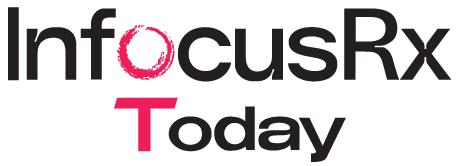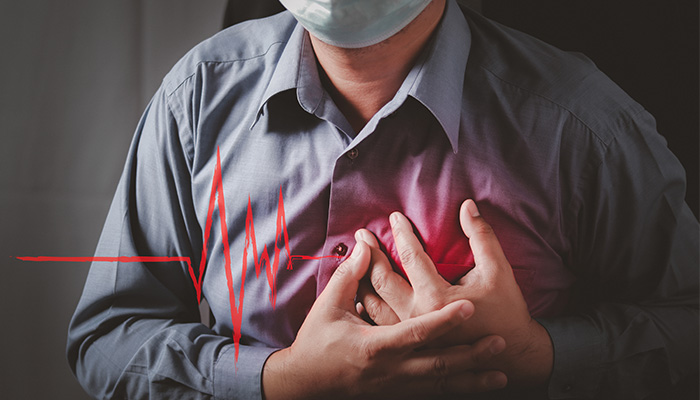Heart disease is a term that is widely recognized, however, the word angina may be unfamiliar to many. In Latin, angina literally means “squeezing of the chest”. It is the pain or discomfort you feel in your chest when your heart isn’t getting enough oxygen-rich blood. Angina, however, is not a disease, but rather a prominent symptom of coronary heart disease (CHD) and should not be ignored. During angina, you’ll feel pain in your arms, shoulder, back, neck, and jaw, along with intense pain in your chest region.
Causes of Coronary Heart Disease
Coronary artery disease (CHD) is a prevalent condition among adults. Coronary artery is responsible for supplying the heart with oxygen-rich blood. In some individuals, the coronary artery may become blocked or narrowed due to the deposition of fats, cholesterol, or other substances on the interior walls of the artery. This deposit is referred to as plaque, and it can narrow and stiffen the coronary artery, reducing the blood flow to the heart and resulting in angina and coronary artery disease. In some cases, the plaque can rupture and form a blood clot, thus blocking the entire blood supply to the heart and leading to a heart attack.
Know your pain
Pain in your chest area can be caused by a variety of factors, including digestion issues, heartburn, stress, heart attack, or myocardial infarction. But how confident are you that your chest pain isn’t angina but just normal pain caused by other reasons? There are a few ways to tell the difference between angina and other types of pain.
Angina is a chest pain that is characterized by a tight or heavy sensation. It is usually accompanied by sweating and difficulty catching your breath. This type of chest pain may commonly be experienced during strenuous activities such as walking, exercising, cleaning, or climbing stairs. Angina may appear as a pressure, squeezing, or burning sensation in the chest; however, it can also be accompanied by pain in the hands, arms, shoulder, neck, back, and jaw. Additionally, numbness or twitching of the arms, shoulder, and wrist may be present, as well as stomach discomfort.
The signs and symptoms of angina may differ depending on the nature of the angina. There are two distinct types of angina: stable and unstable. Stable angina is characterized by mild pain associated with a certain level of activity that subsides upon a brief rest or medication. Conversely, unstable angina is a sudden onset of pain that occurs while resting, sleeping, or doing very light work. In unstable angina, the pain is more intense and lasts for an extended period of time. This type of angina cannot be alleviated by rest or medication and is more likely to lead to a heart attack. Therefore, it is vital to contact emergency services as soon as possible.
Tests performed to confirm angina
The following tests may be performed to check whether you actually suffered from angina.
- Electrocardiogram (ECG): A simple ECG can detect blockages in the arteries or in the heart. If an ECG is done during angina, it can also detect the underlying heart problem. Your doctor may also do a stress ECG, where an ECG will be done while walking on a treadmill to see how your heart responds to activity.
- X-ray: X-ray images of the chest area prior to and after exercise will assist in determining whether sufficient blood is being circulated to all areas of the heart. If this is not the case, it indicates that the arteries that supply blood to the heart may be blocked.
- Cardiac catheterization: Cardiac catheterization detects blockages in the arteries that supply blood to the heart.
- Coronary angiogram: Coronary angiogram uses dye and X-ray to examine the internal walls of coronary arteries.
- Blood test: Blood tests measure the levels of fats, cholesterol, protein, and glucose in the blood. High blood fats and cholesterol levels increase the risk of CHD.
Preventing heart disease
Preventing or reducing the risk of heart disease can be achieved through a variety of lifestyle modifications. These include adopting healthy lifestyle habits, such as abstaining from smoking, consuming a nutritious diet, engaging in regular physical activity, maintaining a healthy body weight, managing stress, and taking appropriate medications. Additionally, treating the underlying conditions associated with heart disease, such as high blood cholesterol, hypertension, diabetes, and obesity, is an essential part of the prevention process. It is important to seek advice from your health care provider on how to manage these conditions.
Treating heart disease
Medications play an important role in the treatment of heart disease. For example, nitrates are used to open up the arteries and allow easy blood flow to your heart. Other medications include statins, beta- blockers, calcium-channel blockers, aspirin, and anticoagulants. These drugs help to control your blood pressure and cholesterol levels, slow down your heart rate, open up your blood vessels and prevent blood clots.
Angioplasty and coronary artery bypass surgery are some of the most common surgical procedures performed for heart disease. Angioplasty is used to remove the blockage of an artery in the heart. Coronary artery bypass grafting, on the other hand, is a procedure in which healthy arteries from other parts of the body are removed and grafted as bypass into the narrowed artery.
Risks involved in heart disease treatment
No medicines or surgical procedures are free from side-effects. For example, aspirin used to prevent a heart attack may cause stomach problems. Nitrates may cause headaches and redness in the face. Beta blockers may cause tiredness, while calcium channel blockers may cause constipation and swelling in the legs. However, these side effects are very rare. In extremely rare instances, surgical procedures may result in a heart attack, stroke, or even death.
Keep your heart disease-free
Heart disease is a chronic condition that does not disappear overnight. Once diagnosed, it is imperative to take appropriate measures to manage the condition. By selecting the appropriate treatment and adhering to a healthier lifestyle, one can guarantee a longer and healthier life.



